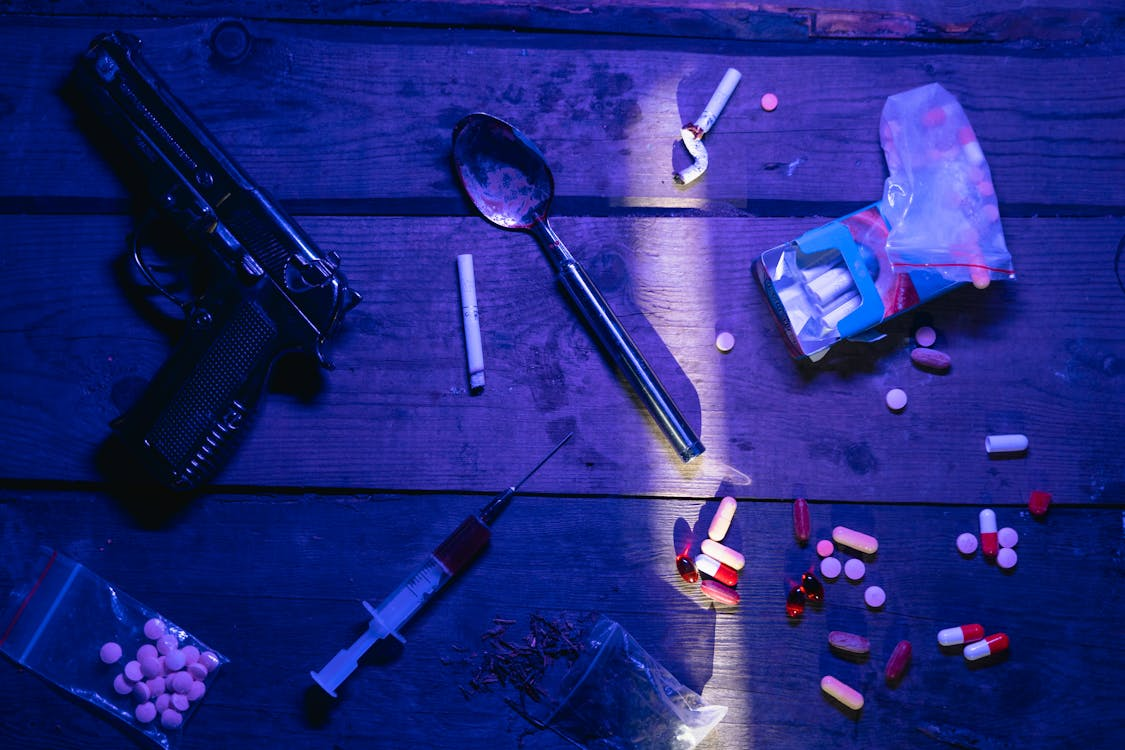9.1 Chapter Overview and Learning Objectives

In this chapter, you will learn how racism shapes the development and ongoing application of drug policy and criminal justice in the United States. This chapter begins with a historical look at how politicians and legislators used racist assumptions and fears to create modern drug policies and laws. Moving into the 1980s and 1990s, you will learn about the War on Drugs started by Richard Nixon and how it led to the disproportionate incarceration of Black, Indigenous, and people of color (BIPOC). Throughout this chapter, you will see how drug policy and laws impact the health of BIPOC, whether it is the transmission of human immunodeficiency virus (HIV) or accidental drug overdoses. We will examine the racist social response to the opioid crisis, and you will see the different ways Black communities are impacted. You will learn about the history of harm reduction and the redefinition of the movement to be more centered on anti-racism and body autonomy. Finally, we’ll explore the legalization of cannabis and the decriminalization of possession of controlled substances in Oregon, and how these efforts may reduce the criminal justice involvement of BIPOC.
Learning Objectives
- Describe how racism influenced the historical creation of drug policies and laws in the United States.
- Explain how drug policies – particularly the War on Drugs – stigmatize, criminalize, and impact health outcomes for communities of color.
- Evaluate the criminal justice system’s response to the opioid crisis along racial lines.
- Examine drug policy reforms that will undo and prevent further mass incarceration.
Key Terms
- Decriminalization: something is still against the law, but violations usually result only in a ticket.
- Drug policy: refers to the procedures used by our government to control the use and sales of psychoactive substances, particularly those that are addictive.
- Drug scares: “a form of moral panic ideologically constructed to construe one or another chemical substance as the core cause of a wide array of preexisting public problems” (Reinarman, 1994:156).
- Harm reduction: focuses on providing people who use drugs or participate in risky activities with the information and material tools to reduce their risks while participating in these activities.
- Liberatory harm reduction: a philosophy and set of empowerment-based practices that teach us how to accompany each other as we transform the root causes of harm in our lives; it is true self-determination and total body autonomy.
- Opioid crisis: refers to the surge in fatal overdoses linked to opioid use (DeWeerdt, 2019).
- Racialized drugs: decriminalizing and medicalizing the sphere of opioid use by white people and continuing to criminalize and control the sphere of opioid use by Black communities.
- War on Drugs: an effort in the United States since the 1970s to combat illegal drug use by greatly increasing penalties, enforcement, and incarceration for drug offenders (Britannica, 2023).
Licenses and Attributions for Chapter Overview and Learning Objectives
Open Content, Original
“Chapter Overview and Learning Objectives” by Kelly Szott, revised by Jessica René Peterson, is licensed under CC BY 4.0.
Open Content, Shared Previously
Figure 9.1. Image by MART PRODUCTION is licensed under the Pexels License.
a form of prejudice that refers to a set of negative attitudes, beliefs, and judgments about whole categories of people, and about individual members of those categories because of their perceived race and ethnicity.
refers to the procedures used by our government to control the use and sales of psychoactive substances, particularly those that are addictive
an effort in the United States since the 1970s to combat illegal drug use by greatly increasing penalties, enforcement, and incarceration for drug offenders (Britannica 2023).
refers to the surge in fatal overdoses linked to opioid use (DeWeerdt 2019)
focuses on providing people who use drugs or participate in risky activities with the information and material tools to reduce their risks while participating in these activities.
something is still against the law, but violations usually result only in a ticket.

